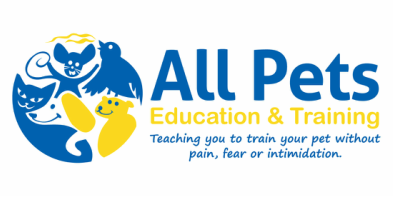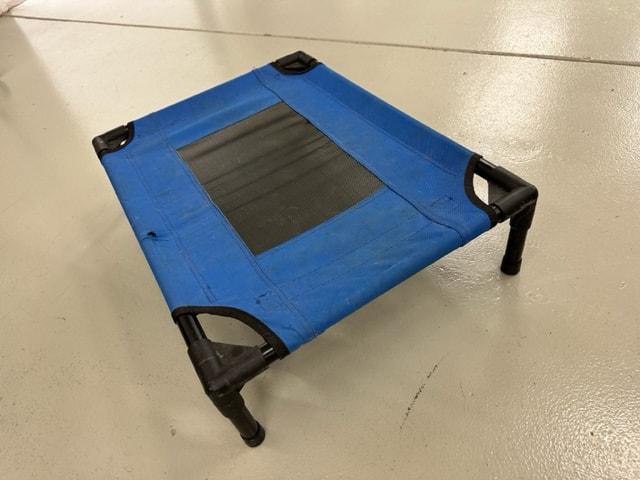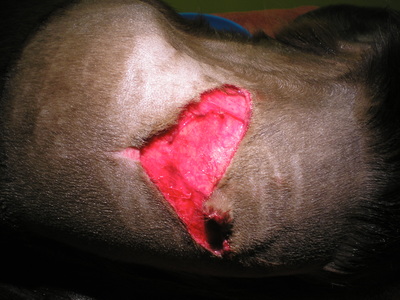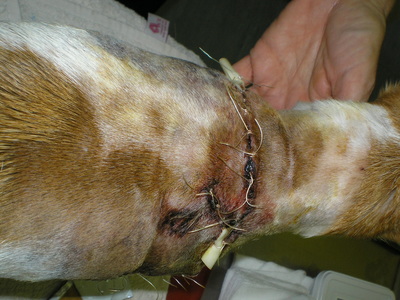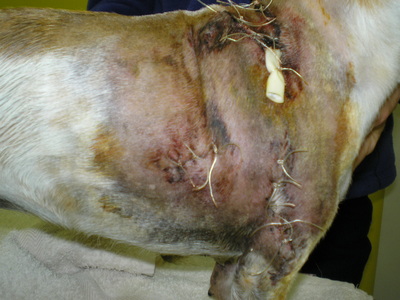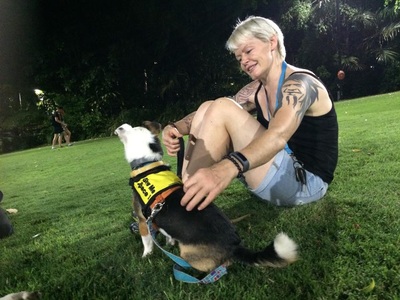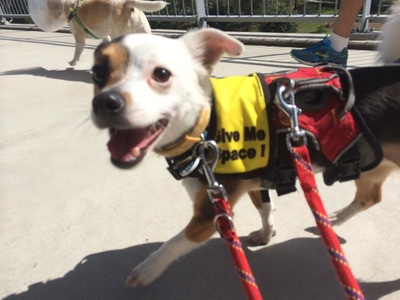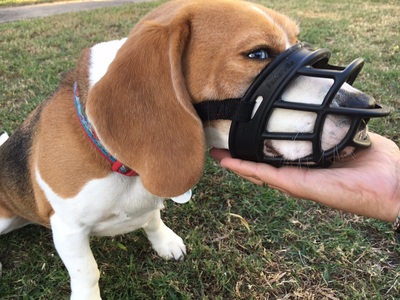What to do in a dog fight/attack
Witnessing or being part of a dog attack or dog fight is a scary thing. You never quite recover, and your dog may not either.
So what should you do?
Your dog is approaching or is approached by another dog
Obviously this could turn sour. The approaching dog may aggress, or the approached dog may aggress.
Many dogs have leash reactivity and will react by lunging, barking and possibly biting when on leash and another dog approaches (this usually stems from fear, and the reaction is designed to be a distance increasing behaviour).
In some cases simply dropping the leash if safe to do so will be enough to allow the dogs to meet and move whilst also preventing a fight.
What area are you in? If you are at an off leash area, please do not just assume that all dogs are friendly. Some people will unfortunately take fearful or reactive dogs to the dog park etc, because they decide they need socialisation.
Look at the body language. Is the dog relaxed or stiff? Where are the ears? Is the dog’s tail raised or lowered, wagging freely, stiffly or not at all? Any vocalisation?
If you are at an off lead beach, please ensure that if you choose to let your dog off lead, that he/she has a reliable recall, and you can call him/her away from distractions (including dogs, people and balls etc).
If you decide that you do not want to participate in this potential dog/dog interaction
#1 Assuming the dog is with an owner – ask them to stop or call their dog away – yelling “my dog is contagious” is usually enough to get people to call their dogs away…. You may just need to explain that they aren’t really after the situation has been averted.
#2 If not with an owner or the owner is oblivious, curve and walk away calmly.
#3 Tell the dog to “go away” or “go home”
#4 Teach your dog to step in behind you - so you are a barrier
#5 Do a food toss to distract the approaching dog.
#6 Use an umbrella as a shield.
So what should you do?
Your dog is approaching or is approached by another dog
Obviously this could turn sour. The approaching dog may aggress, or the approached dog may aggress.
Many dogs have leash reactivity and will react by lunging, barking and possibly biting when on leash and another dog approaches (this usually stems from fear, and the reaction is designed to be a distance increasing behaviour).
In some cases simply dropping the leash if safe to do so will be enough to allow the dogs to meet and move whilst also preventing a fight.
What area are you in? If you are at an off leash area, please do not just assume that all dogs are friendly. Some people will unfortunately take fearful or reactive dogs to the dog park etc, because they decide they need socialisation.
Look at the body language. Is the dog relaxed or stiff? Where are the ears? Is the dog’s tail raised or lowered, wagging freely, stiffly or not at all? Any vocalisation?
If you are at an off lead beach, please ensure that if you choose to let your dog off lead, that he/she has a reliable recall, and you can call him/her away from distractions (including dogs, people and balls etc).
If you decide that you do not want to participate in this potential dog/dog interaction
#1 Assuming the dog is with an owner – ask them to stop or call their dog away – yelling “my dog is contagious” is usually enough to get people to call their dogs away…. You may just need to explain that they aren’t really after the situation has been averted.
#2 If not with an owner or the owner is oblivious, curve and walk away calmly.
#3 Tell the dog to “go away” or “go home”
#4 Teach your dog to step in behind you - so you are a barrier
#5 Do a food toss to distract the approaching dog.
#6 Use an umbrella as a shield.
What should you carry when out and about on walks
A lead, you should always have a lead, even when heading to off lead areas.
Food – tasty treats – I take meaty chunks – not many dogs can resist them.
Water bottle - can tip or squirt water at approaching or fighting dogs
Umbrella – the umbrella can act as a shield. Popping it up as a dog approaches, is often enough to make it turn and go away.
Direct Stop/Spray Shield – I also always carry direct stop – this is a citronella based spray that shoots out as a jet. I have only needed it on a couple of occasions when non-friendly dogs have approached mine when out walking. It works, however, apart from causing them to snort, sneeze and smell like lemons, causes little harm.
What to do if a fight has started
#1 Remain calm and try not to yell. Your frantic yelling can increase the arousal level of the dogs and actually increase the intensity of the fight. The most important goal when breaking up a fight is to maintain your safety and that of those around you.
#2 Look around and ensure the safety of others. Remove other pets and children from the area. No joke, I have been walking along and had an attacking dog approach. Picked up and tossed my pups one by one into the back of a ute parked on the side of the road. No idea who owned it etc, however removed the dogs from the situation quickly.
#3 Most fights are more noise than anything else. If the dogs have engaged, we want to separate the dogs without getting bitten by a redirection from one or both of the dogs.
#4 If possible, break up the fight without physically grabbing the dogs.
Things you can try are:
#5 If the above hasn’t worked, and you need to resort to physical means and you are attempting to grab any part of the dog – avoid the head and neck area.
Ideally grab the back legs of each dog and lift up and pull away slightly and hold (wheelbarrow). The dogs may take a few seconds to disengage from each other. Once they have don’t just release the dogs (use a leash etc to capture them), as if they are released, they will likely re-engage.
#6 Another physical method I have heard about, but never tried (hopefully never will) is to put your finger inside the attacking dogs rectum.
To be honest I think this would do more harm than good, and you are likely to end up with a broken finger too.
#1 Remain calm and try not to yell. Your frantic yelling can increase the arousal level of the dogs and actually increase the intensity of the fight. The most important goal when breaking up a fight is to maintain your safety and that of those around you.
#2 Look around and ensure the safety of others. Remove other pets and children from the area. No joke, I have been walking along and had an attacking dog approach. Picked up and tossed my pups one by one into the back of a ute parked on the side of the road. No idea who owned it etc, however removed the dogs from the situation quickly.
#3 Most fights are more noise than anything else. If the dogs have engaged, we want to separate the dogs without getting bitten by a redirection from one or both of the dogs.
#4 If possible, break up the fight without physically grabbing the dogs.
Things you can try are:
- Spray with water
- Direct Stop – citronella spray
- Making a startling loud noise – air horn, honking car etc
- Banging metal lids/bowls together (obviously this will only work at home)
- Use a board /dog bed to push between them and split them
- Fire Extinguisher
- Toss a blanket over them
#5 If the above hasn’t worked, and you need to resort to physical means and you are attempting to grab any part of the dog – avoid the head and neck area.
Ideally grab the back legs of each dog and lift up and pull away slightly and hold (wheelbarrow). The dogs may take a few seconds to disengage from each other. Once they have don’t just release the dogs (use a leash etc to capture them), as if they are released, they will likely re-engage.
#6 Another physical method I have heard about, but never tried (hopefully never will) is to put your finger inside the attacking dogs rectum.
To be honest I think this would do more harm than good, and you are likely to end up with a broken finger too.
What to do after a fight
Remember, any dog that is scared or in pain has the potential to bite. Muzzle or temporary muzzle your dog if need be.
Check your dog over for injuries.
Can he/she move and feel all limbs. If the dog is not walking, pinch the toes to check that they are able to feel the sensation and pull away from you. If not, the dog may have a spinal injury. Keep the dog’s spine straight and transport to vet using solid board or sling.
Punctures and small wounds can hide quite effectively in long or short but thick coated dogs. Many dog bite wounds do not bleed heavily due to the tearing nature of them.
Was the dog shaken by the other dog? If so, he/she may not have punctures or lacerations, but could still have serious injury.
Any puncture will require veterinary treatment – clip and clean, possibly suture, plus antibiotics and pain relief.
Is there bleeding? Is it dripping, pouring or pulsing out? Cover the area and apply pressure. Take to vet immediately.
Report any dog attacks to the local council in that area.
Take photos for evidence and ensure you get the veterinarians report for any treatment required.
Watch any injured areas for days for infection. Dogs have grotty mouths (they eat poo), so infection can readily occur.
Remember, any dog that is scared or in pain has the potential to bite. Muzzle or temporary muzzle your dog if need be.
Check your dog over for injuries.
Can he/she move and feel all limbs. If the dog is not walking, pinch the toes to check that they are able to feel the sensation and pull away from you. If not, the dog may have a spinal injury. Keep the dog’s spine straight and transport to vet using solid board or sling.
Punctures and small wounds can hide quite effectively in long or short but thick coated dogs. Many dog bite wounds do not bleed heavily due to the tearing nature of them.
Was the dog shaken by the other dog? If so, he/she may not have punctures or lacerations, but could still have serious injury.
Any puncture will require veterinary treatment – clip and clean, possibly suture, plus antibiotics and pain relief.
Is there bleeding? Is it dripping, pouring or pulsing out? Cover the area and apply pressure. Take to vet immediately.
Report any dog attacks to the local council in that area.
Take photos for evidence and ensure you get the veterinarians report for any treatment required.
Watch any injured areas for days for infection. Dogs have grotty mouths (they eat poo), so infection can readily occur.
What if your dog has the potential to start a fight?
#1 Firstly set your dog up for success and do your 100% best not to put it in those situations which may end in a fight
#2 No going to off lead parks and beaches (especially at peak hour).
#3 Have your dog wear a “Give Me Space” vest or bandana when out and about.
#4 Muzzle train your dog (this still does not mean that you should put your dog into deliberate situations where he/she may feel the need to react).
#5 Monitor at home access to resources (multi-dog households). Resources some dogs may fight over include, food, humans, and access to areas (door ways, beds etc), or when they feel threatened or cornered.
Dog interactions can also result in fights in times of over arousal, such as excitement on greeting people, and redirected aggression at fences.
#1 Firstly set your dog up for success and do your 100% best not to put it in those situations which may end in a fight
#2 No going to off lead parks and beaches (especially at peak hour).
#3 Have your dog wear a “Give Me Space” vest or bandana when out and about.
#4 Muzzle train your dog (this still does not mean that you should put your dog into deliberate situations where he/she may feel the need to react).
#5 Monitor at home access to resources (multi-dog households). Resources some dogs may fight over include, food, humans, and access to areas (door ways, beds etc), or when they feel threatened or cornered.
Dog interactions can also result in fights in times of over arousal, such as excitement on greeting people, and redirected aggression at fences.
